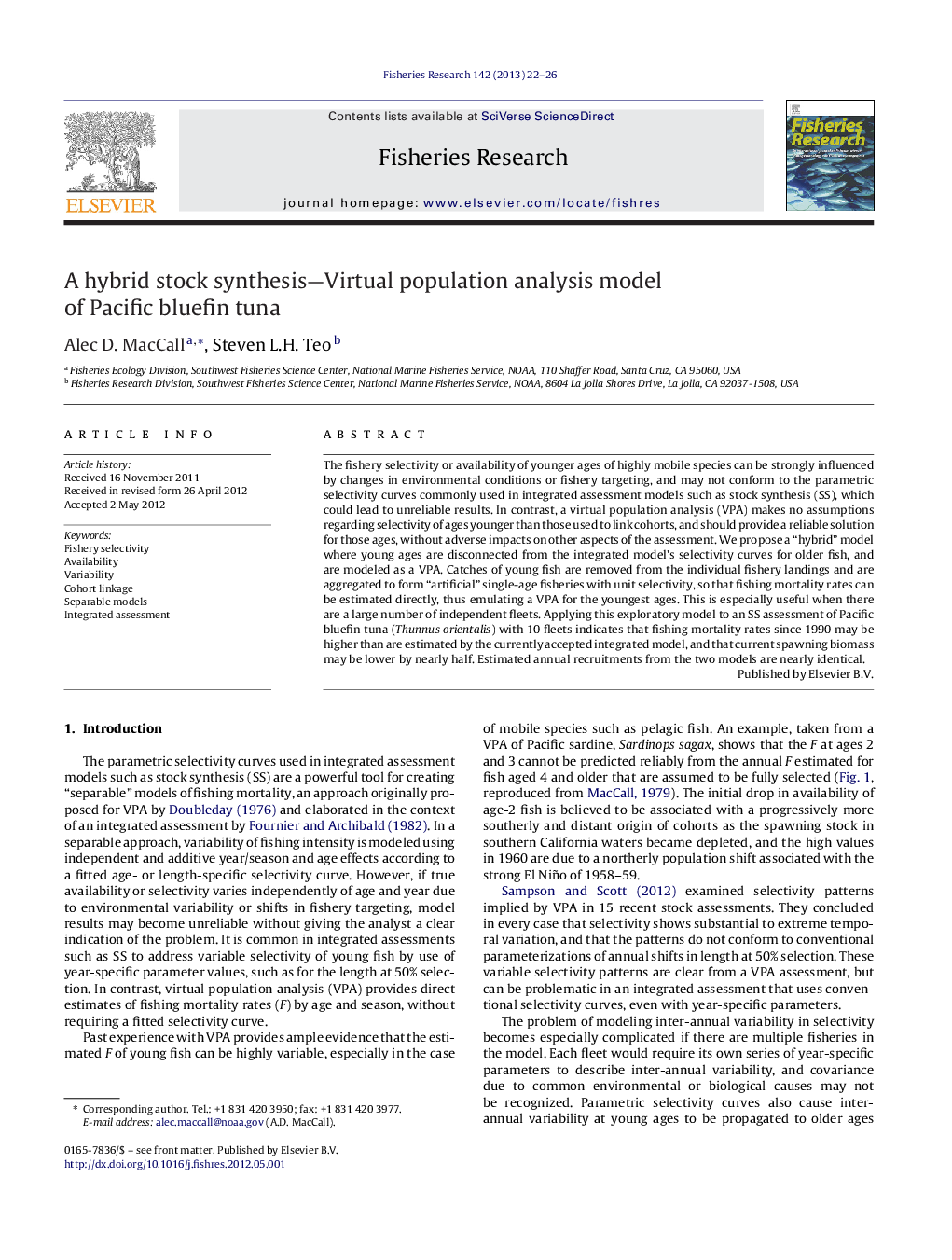| Article ID | Journal | Published Year | Pages | File Type |
|---|---|---|---|---|
| 4543128 | Fisheries Research | 2013 | 5 Pages |
The fishery selectivity or availability of younger ages of highly mobile species can be strongly influenced by changes in environmental conditions or fishery targeting, and may not conform to the parametric selectivity curves commonly used in integrated assessment models such as stock synthesis (SS), which could lead to unreliable results. In contrast, a virtual population analysis (VPA) makes no assumptions regarding selectivity of ages younger than those used to link cohorts, and should provide a reliable solution for those ages, without adverse impacts on other aspects of the assessment. We propose a “hybrid” model where young ages are disconnected from the integrated model's selectivity curves for older fish, and are modeled as a VPA. Catches of young fish are removed from the individual fishery landings and are aggregated to form “artificial” single-age fisheries with unit selectivity, so that fishing mortality rates can be estimated directly, thus emulating a VPA for the youngest ages. This is especially useful when there are a large number of independent fleets. Applying this exploratory model to an SS assessment of Pacific bluefin tuna (Thunnus orientalis) with 10 fleets indicates that fishing mortality rates since 1990 may be higher than are estimated by the currently accepted integrated model, and that current spawning biomass may be lower by nearly half. Estimated annual recruitments from the two models are nearly identical.
► Stock synthesis can be configured to use a VPA model for the younger ages. ► VPA gains an improved cohort linkage function. ► F at younger ages is disconnected from selectivity curves. ► Anomalies in young fish selectivity are not propagated to older cohorts. ► This approach is desirable for stocks with unpredictable young fish availability.
